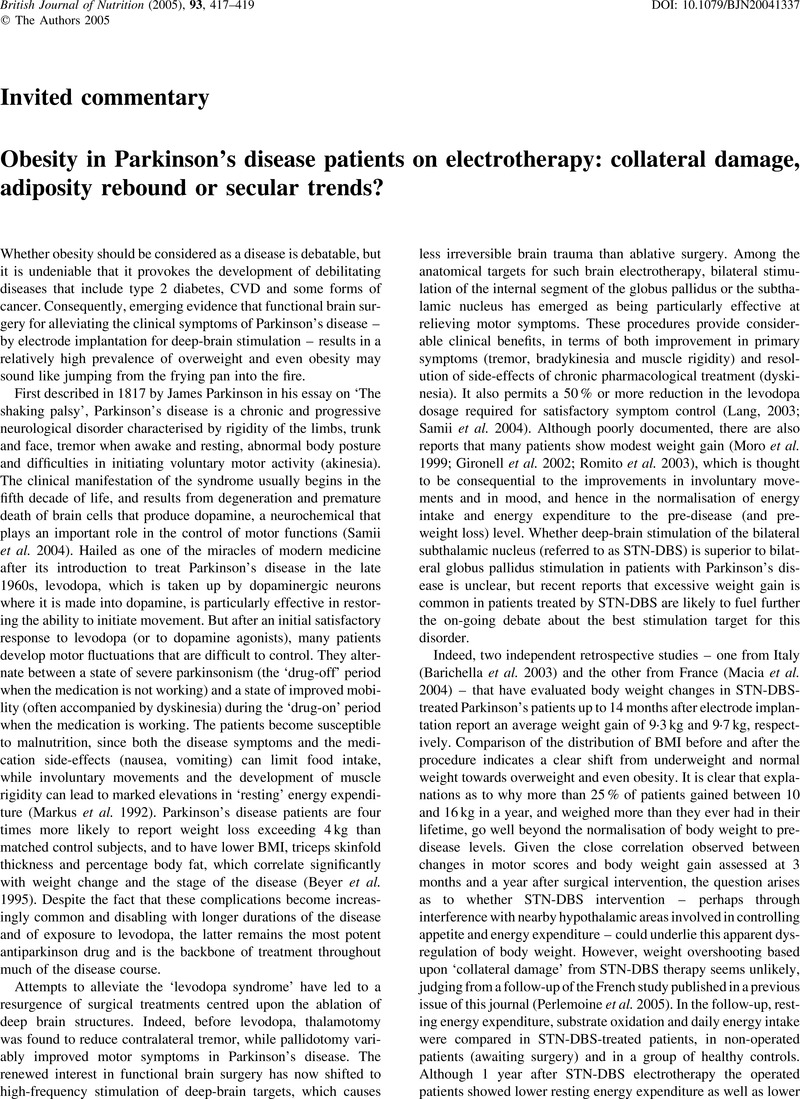Crossref Citations
This article has been cited by the following publications. This list is generated based on data provided by Crossref.
Dulloo, A G
Jacquet, J
Seydoux, J
and
Montani, J-P
2006.
The thrifty ‘catch-up fat’ phenotype: its impact on insulin sensitivity during growth trajectories to obesity and metabolic syndrome.
International Journal of Obesity,
Vol. 30,
Issue. S4,
p.
S23.
Castrioto, Anna
Lhommée, Eugénie
Moro, Elena
and
Krack, Paul
2014.
Mood and behavioural effects of subthalamic stimulation in Parkinson's disease.
The Lancet Neurology,
Vol. 13,
Issue. 3,
p.
287.
Kistner, Andrea
Lhommée, Eugénie
and
Krack, Paul
2014.
Mechanisms of Body Weight Fluctuations in Parkinson’s Disease.
Frontiers in Neurology,
Vol. 5,
Issue. ,
Castilla-Cortázar, Inma
Aguirre, Gabriel A.
Femat-Roldán, Giovana
Martín-Estal, Irene
and
Espinosa, Luis
2020.
Is insulin-like growth factor-1 involved in Parkinson’s disease development?.
Journal of Translational Medicine,
Vol. 18,
Issue. 1,
Allwright, Michael
Mundell, Hamish
Sutherland, Greg
Austin, Paul
Guennewig, Boris
and
Sabbatinelli, Jacopo
2023.
Machine learning analysis of the UK Biobank reveals IGF-1 and inflammatory biomarkers predict Parkinson’s disease risk.
PLOS ONE,
Vol. 18,
Issue. 5,
p.
e0285416.



